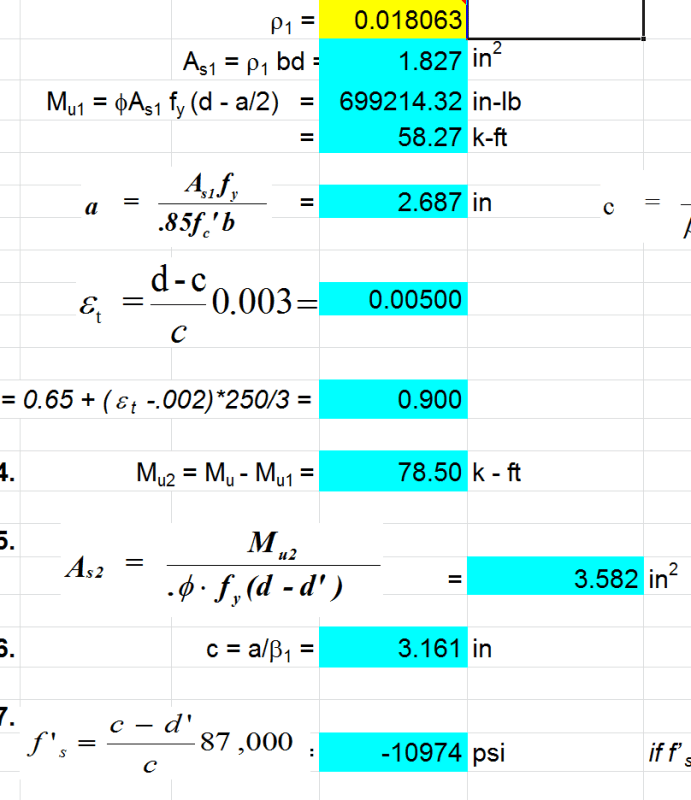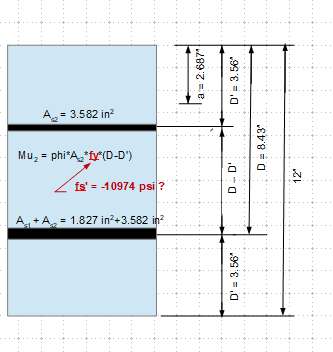BAretired said:
(Not true. He assumed d' of 3.56" which puts the compression steel near the middle of the section)
maybe but don't know for sure as op never mentions the overall section height, it's close if you assume d+1.5" = H.
BAretired said:
(but you put your compression steel below the neutral axis of the section, so the formula was invalid.)
It's not compression steel, as confirmed by the calculation the steel is in tension and it should be because the section is both too small and substantially under reinforced.
BAretired said:
It's not under reinforced. As1 + As2 = 5.409in2. It is over reinforced. The concrete section needs to be substantially larger to resist this moment.
If the extreme steel strain is > than 0.004 then the section is still tension controlled and not over reinforced, there is such a large amount of steel because again the section was under reinforced, and the d' puts the next layer of tension steel at such an inefficient location that it takes a good amount more As to produce the required moment.
BAretired said:
That would make things even worse as the compression steel would be at the bottom of the section.
It's not compression steel, the cross section is screaming that it needs to be bigger or in the absence of increasing in size have more reinforcement at as low an elevation as possible.
Edit:
We agree that the section is too small. If you assume that the overall cross section height is 12" then yes to get near that Mu you will need compression reinforcement while at the same time nearly tripling the tension steel area.
OP, your analysis is invalid because it appears you didn't re-calculate the neutral axis depth after considering the second layer of steel you are trying to add, doing this you'll find that the steel is in tension and phiMn is still substantially less than your Mu.
My Personal Open Source Structural Applications:
Open Source Structural GitHub Group:






